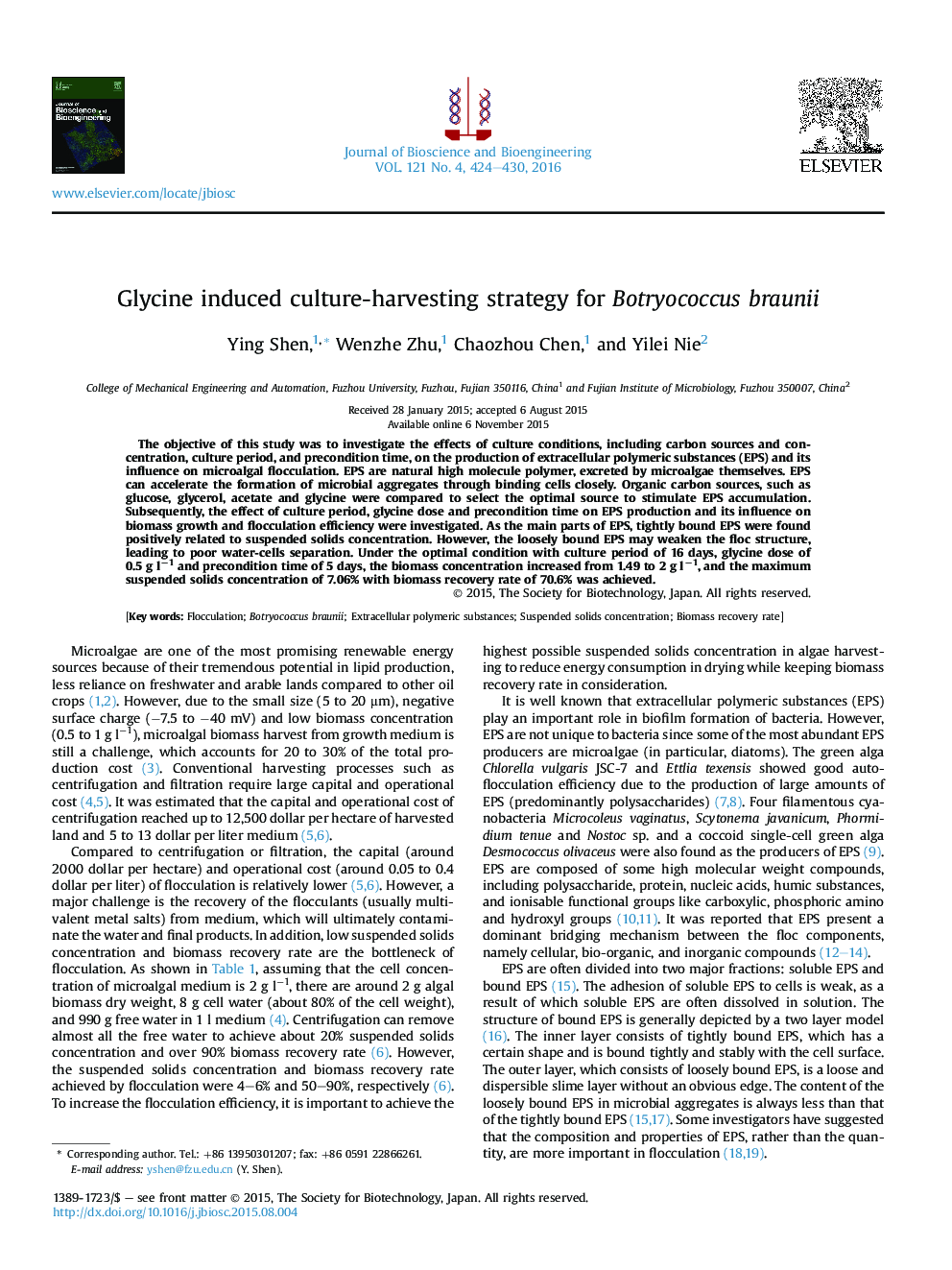| کد مقاله | کد نشریه | سال انتشار | مقاله انگلیسی | نسخه تمام متن |
|---|---|---|---|---|
| 20134 | 43159 | 2016 | 7 صفحه PDF | دانلود رایگان |

• A glycine induced culture-harvesting strategy was provided.
• As natural complex biopolymers, EPS were found involved in flocculation.
• Tightly bound EPS, which were the main parts of EPS, were found positively related to suspended solids concentration.
• Suspended solids concentration of 7.06% with biomass recovery rate of 70.6% was achieved.
The objective of this study was to investigate the effects of culture conditions, including carbon sources and concentration, culture period, and precondition time, on the production of extracellular polymeric substances (EPS) and its influence on microalgal flocculation. EPS are natural high molecule polymer, excreted by microalgae themselves. EPS can accelerate the formation of microbial aggregates through binding cells closely. Organic carbon sources, such as glucose, glycerol, acetate and glycine were compared to select the optimal source to stimulate EPS accumulation. Subsequently, the effect of culture period, glycine dose and precondition time on EPS production and its influence on biomass growth and flocculation efficiency were investigated. As the main parts of EPS, tightly bound EPS were found positively related to suspended solids concentration. However, the loosely bound EPS may weaken the floc structure, leading to poor water-cells separation. Under the optimal condition with culture period of 16 days, glycine dose of 0.5 g l−1 and precondition time of 5 days, the biomass concentration increased from 1.49 to 2 g l−1, and the maximum suspended solids concentration of 7.06% with biomass recovery rate of 70.6% was achieved.
Journal: Journal of Bioscience and Bioengineering - Volume 121, Issue 4, April 2016, Pages 424–430